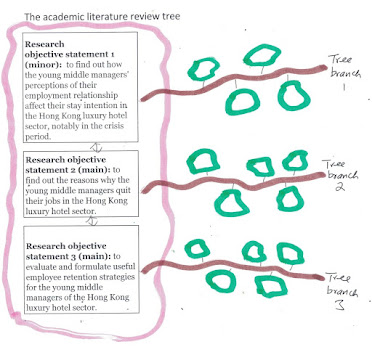This note demonstrates how to uncover the academic literature review tree from the following academic article. It serves as a teaching for my MBA students learning the agile literature review approach (the academic-oriented type).
Shukla, D,M., Mital, A. and Qureshi, I. 2024. “Effects of alliance portfoliobreadth and depth on exploratory and exploitative innovation: Evidence fromIndian high-tech sectors” Journal of Business Research 179, Elseiver, 114686
“Innovation is
crucial for firms’ survival and sustained performance, particularly in
high-tech sectors (Guan & Liu, 2016; Laursen & Salter, 2006; Teece et
al., 1997). A vast and growing body of literature suggests that firms
increasingly follow collaborative innovation 1 strategies and engage in
multiple simultaneous alliances, which is referred to as an alliance portfolio
(AP; e.g. Davis & Eisenhardt, 2011; Faems et al., 2005; Kobarg et al.,
2019; Laursen & Salter, 2006; Wassmer, 2010; Xie et al., 2023). Collaborative
innovation helps firms to access, acquire and integrate external knowledge and
develop innovation capabilities (e.g. Chesbrough, 2003; Guan & Liu, 2016;
Hagedoorn et al., 2018; Laursen & Salter, 2006; Wassmer, 2010). AP breadth
and depth are two important dimensions of firms’ collaborative innovation,
determining the volume and quality of external knowledge that a firm can access
or integrate (Hora & Dutta, 2013; Kobarg et al., 2019; Laursen & Salter,
2006; Y. Zhang et al., 2022)….
AP breadth can
increase combinatorial opportunities for value creation through a broad
knowledge search and help firms to broaden their knowledge base (Davis &
Eisenhardt, 2011; de Leeuw et al., 2014; Kobarg et al., 2019; Y. Zhang et al.,
2022). AP depth enhances trust and knowledge sharing between partners and can
help firms to value and integrate relevant external knowledge elements to
refine and deepen their knowledge base (Davis & Eisenhardt, 2011; Hora
& Dutta, 2013; Laursen & Salter, 2006; Y. Zhang et al., 2022). However,
prior studies have also suggested that AP breadth can lead to a ‘learning trap’
and increase coordination and information-processing challenges (de Leeuw et
al., 2014; Hagedoorn et al., 2018). Similarly, AP depth can limit a f irm’s
ability to value and process novel knowledge, given that it can lead firms to a
‘familiarity trap’ (Goerzen, 2007; Hagedoorn & Frankort, 2008)…
Although the
potential benefits and pitfalls of AP breadth and depth have been highlighted
in prior studies (Davis & Eisenhardt, 2011; Hora & Dutta, 2013; Y.
Zhang et al., 2022), the mechanisms through which AP breadth and
depth affect firm innovation are yet to be understood well. Prior
studies have presented mixed findings about the effects of AP breadth and depth
on firm innovation”.
The research gap statement: the
academic literature on firm innovation is unclear on the effects of alliance portfolio
(AP) breadth and depth on firm innovation regarding the Indian high-tech
sectors in 2024.
The research objective statement: to
find out more on the effects of alliance portfolio (AP) breadth and depth on
firm innovation regarding the Indian high-tech sectors in 2024.
By studying the article, I uncover the the following academic literature review tree:

Referring to the uncovered academic literature tree (with 1 tree branch), the tree branch type is scientific reasoning (SR). The tree leaves (academic ideas) are the academic ideas employed in the study as reported in the academic article of Shukla, Mital and Qureshi (2024).
By mapping the research method (i.e. a public document study with quantitative data analysis) onto the academic literature review tree, I uncover the academic literature review tree-b, as follows:
Based on an MBA student's intellectual interest, he or she could come up with a academic tree node, such as [note: with some tree leaves not the same as that of Shukla, Mital and Qureshi (2024); not done in this example]:

Since the MBA student will perform his/her own literature review effort, thus, the academic ideas to use should not be 100% the same as the one of Shukla, Mital and Qureshi (2024); the references to use should, again, not be 100% the same as that of Shukla, Mital and Qureshi (2024). It is also useful to include referencing info on the tree leaves, e.g. R&D intensity (surname, year), (Exploitative innovation (surname 1, year; surname 2, year), etc. Finally, the literature review content of the MBA student's dissertation report should reflect his/own own review viewpoints.

















